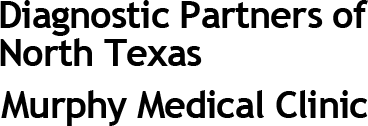Skin Disease
Rosacea
Rosacea is a chronic inflammatory skin condition which primarily affects the face. Initially it presents as facial redness then gradually red pimples and pus filled bumps will appear. Rosacea may appear on the nose and cheeks where small blood vessels become visible and the condition is called rhinophyma. Rosacea may also affect the eyes and cause conjunctivitis and/or blepharitis. Rosacea is more common in adults and is more common in women and fair skinned people. It is also referred to as acne rosacea. It is not contagious and is a progressive disease.
Rosacea, based on the characteristic appearance, is categorized into four types.
- Erythematotelangiectatic rosacea
- Papulopustular rosacea
- Phymatous rosacea
- Ocular rosacea
Causes
The exact cause is uncertain but rosacea is often triggered by hot or spicy foods, alcoholic drinks, sun exposure, strenuous exercise, stress as well as very hot or cold temperatures.
Signs and Symptoms
- It most commonly affects the central part of the face –chin, cheeks, nose and central forehead
- The most common symptom is frequent blushing or flushing (redness) of the skin
- Small red pimples and pus filled bumps known as papules or pustules may appear
- Small blood vessels across the nose and cheeks are dilated. The area of the skin may be swollen warm and red
- Other symptoms may include burning sensation, fluid under the skin (edema), and dry appearance of the skin
Diagnosis
Dermatologists diagnose the condition by collecting a thorough medical history and by observation of the lesions appearing on the skin.
Treatment
Your dermatologist will suggest some practices to avoid exposure to triggers and prescribe treatment for the lesions.
- Medications – Medicines used to treat rosacea include antibiotics. These may applied topically or taken orally. Antibiotic cream or gel called metronidazole (Metro gel® or Metro Cream®) can be applied to the skin. Tretinoin, benzoyl peroxide, and azelaic acid (Azelex®) are commonly prescribed topical medications. Isotretinoin (Accutane®) may also be recommended in certain cases. Oral antibiotics tend to give faster results than topical ones and include tetracycline, minocycline and erythromycin
- Laser treatment – Laser treatment is recommended in severe cases. Dilated blood vessels are treated with lasers. In this form of treatment pulsed dye laser is used where powerful beams of light are bombarded on the lesion and blood vessels under the skin. The energy of the lasers produces heat that builds up in the blood vessels and eventually destroys the abnormal vessels
- Intense pulsed light- It is a new form of therapy which uses a non-laser light source
- Cosmetic surgery and plastic surgery – Surgical techniques may be used to correct the irregularities of the nose
Preventive tips
Practicing some healthy tips may help you prevent rosacea.
- Avoid spicy foods
- Avoid alcohol
- Do not rub or touch the skin
- Use moisturizers
- Avoid sun exposure
- Avoid temperature extremes of hot and cold
- Avoid stress





